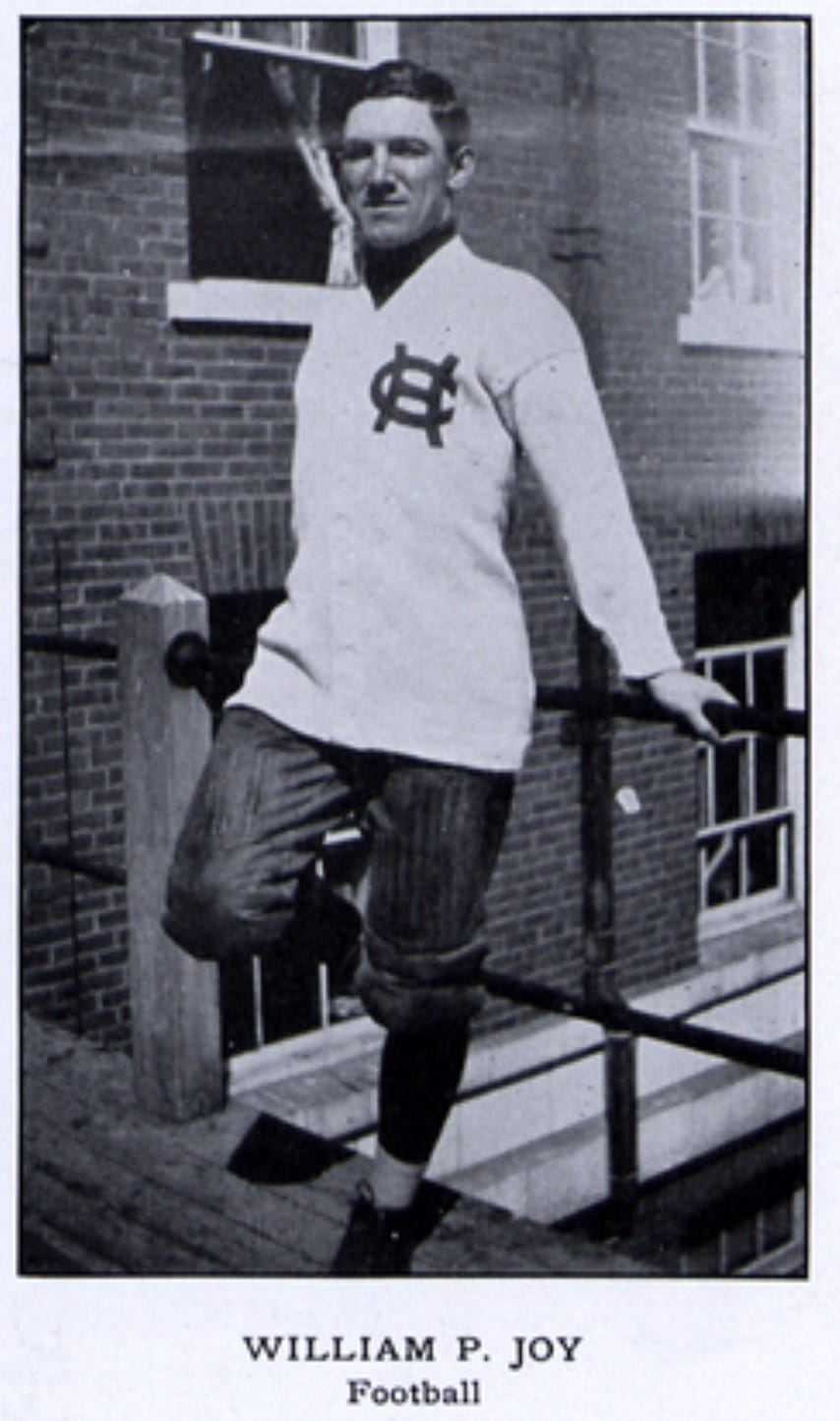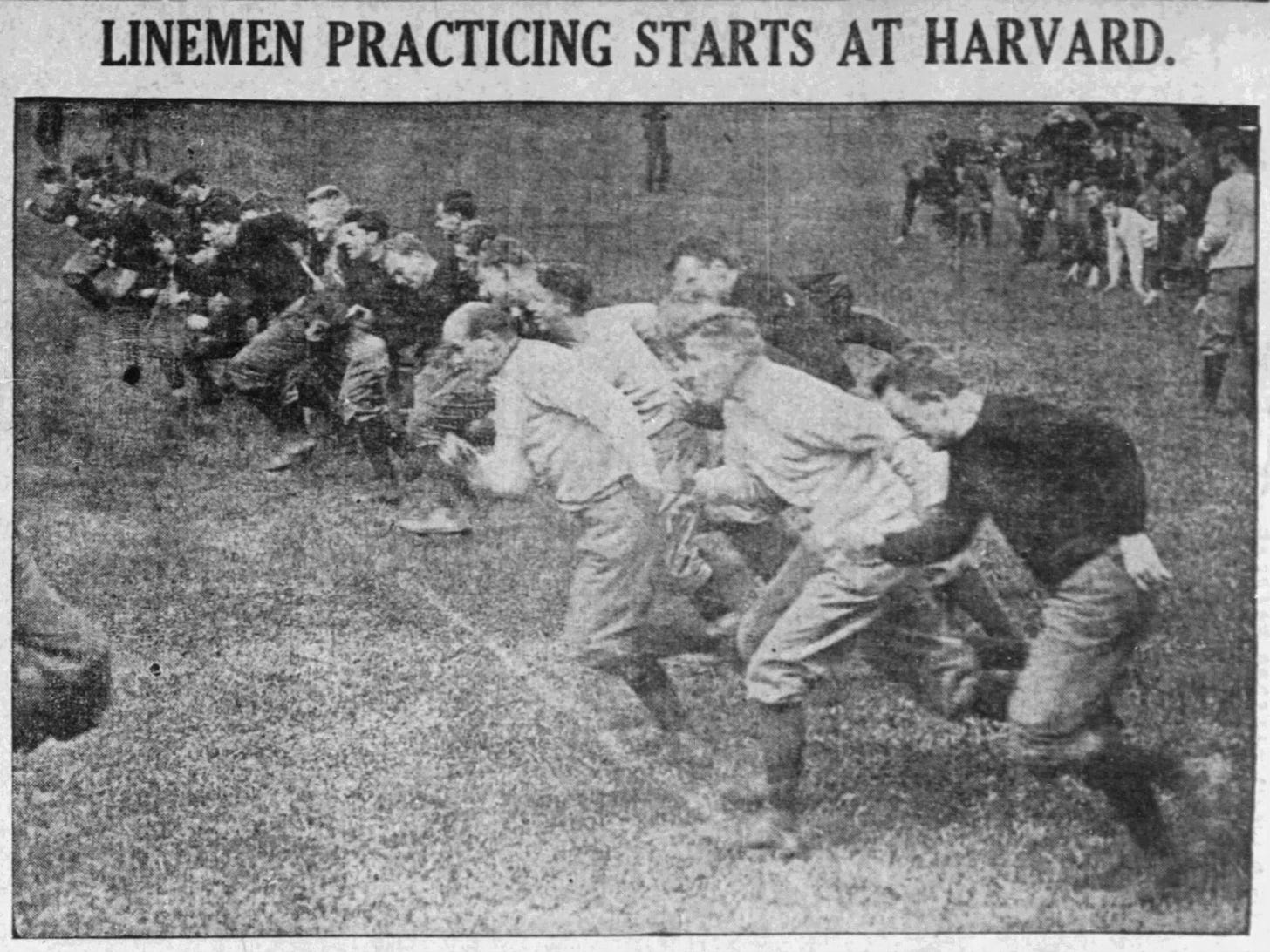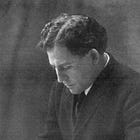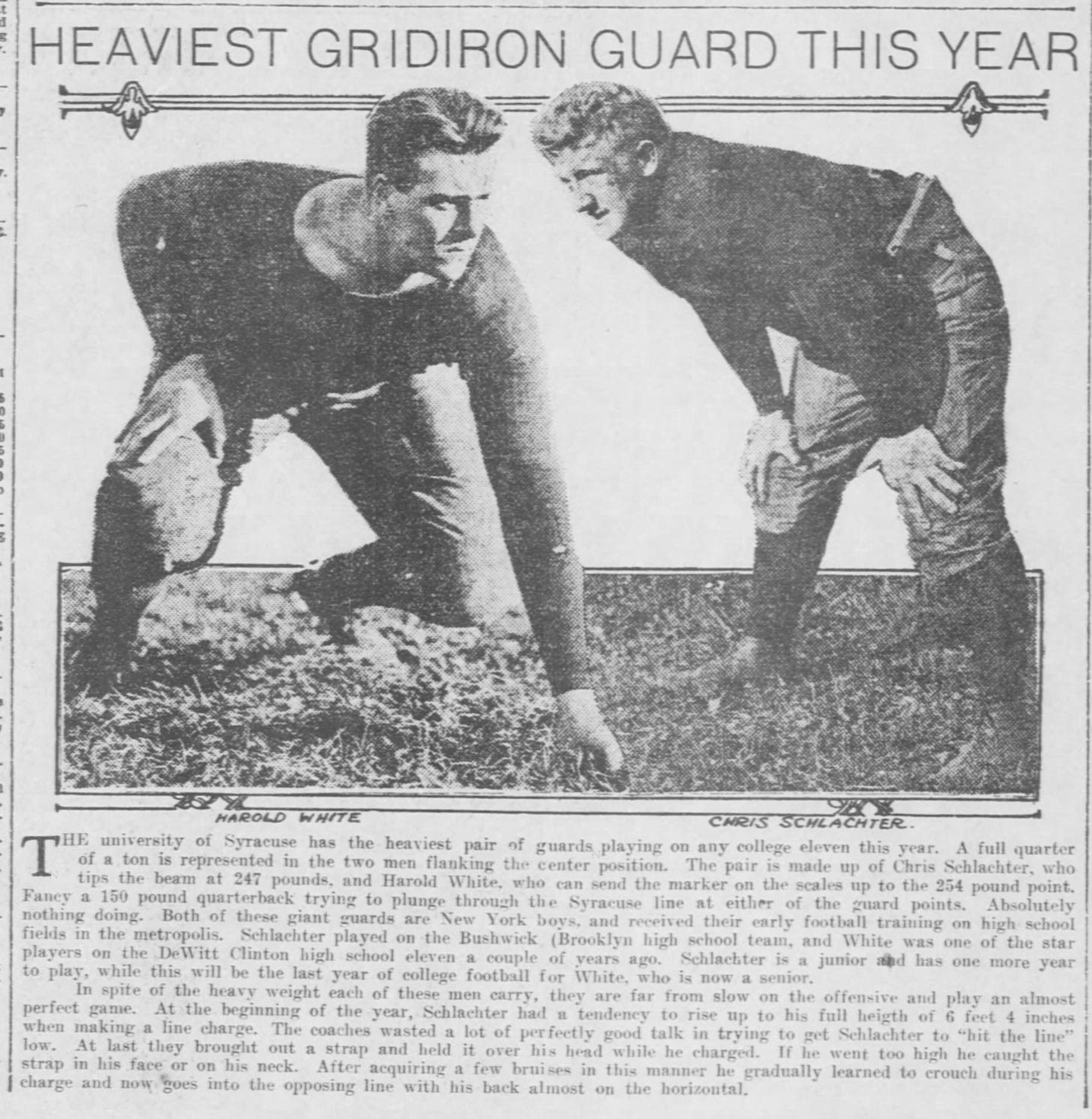Factoid Feast XVI
As discussed in Factoid Feasts I, II, III, IV, V, VI, VII, VIII, IX, X, XI, XII, XIII, XIV, and XV, my searches through football history sometimes lead to topics too important to ignore but too minor to Tidbit. Such nuggets are factoids, three of which are shared today.
The latest version of Factoid Feast celebrates the boys who played in the line in the 1910s.
The Joy of Kicking
William P. Joy had a more than solid game when Holy Cross beat Tufts 14-0 on a November day in 1910. Joy was the captain, left end, and primary punter and kicker for the Crusaders. Early in the game, he punted several times, had several gains on end-around runs, and threw a forward pass or two, though one of them crossed the goal line, leading to a touchback under the rules of the time.
Joy kicked an extra point during the second quarter, yet his moments of glory came early in the second half. At that point, Holy Cross was in trouble, holding the ball only a few yards from their own goal line. Whether they chose to quick kick or decided to give their punter maximum protection, Joy remained at his left end position as Mahoney, the Holy Cross quarterback, punted from behind the goal line. The ball sailed far upfield, where Tufts fumbled the ball and Joy fell on it at midfield.
Holy Cross opted to quick kick on the next play. The ball did not travel as far, but Tufts fumbled again, allowing Joy to recover the ball once again, this time on the 18-yard line. Mahoney then tossed Joy a pass to set up a touchdown run two plays later, after which Joy kicked the extra point.

Recovering fumbled punts two plays in a row is a feat that would be difficult to duplicate today. Teams don’t punt on first down anymore, not even on second down, but it sure would be Joyful to have it occur again. Iowa, are you listening?
Training Camp Starts
College football training camp is underway, in what seems like the earliest ever start. Rather than celebrate the start of camp with a factoid, we'll celebrate it instead with a classic picture of Harvard's big boys getting in shape in 1912.
The image reminds me of a 2023 Tidbit regarding the origins of wind sprints.
More Big Boys
The Harvard linemen running wind sprints look like reasonably-sized human beings. Though football coaches were happy to have large men in their lines back then, most linemen were closer to average size than they have been since football began platooning and became specialized.
Before platooning, stories periodically arose of particularly large players, or in the case of the 1915 Syracuse team, a pair of hefty fellows. Not only did Syracuse have a 247-pound guard, they had one tipping the scales at 254 pounds as well.
Both must have been good, along with the rest of the team, since they went 9-1-2 on the season. Their final three games came at Montana, at Oregon State, and versus Occidental in LA, making them the second Eastern team to cross the Rockies to play football. (Carlisle did so twice before Syracuse headed west.)
Football Archaeology is reader-supported. Click here to donate a couple of bucks, buy one of my books, or otherwise support the site.






What might be the class year of the bald Harvard lineman practicing starts in 1912?